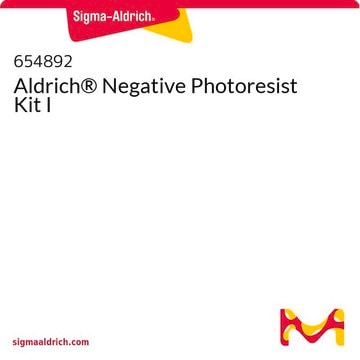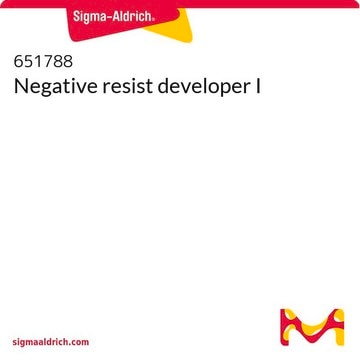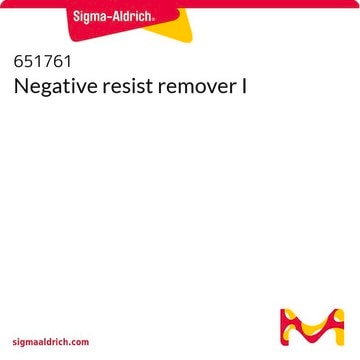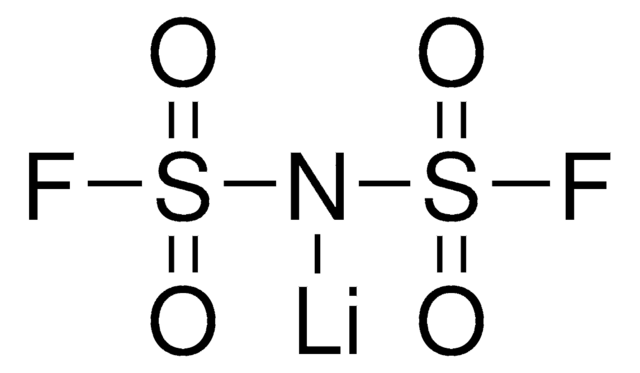Products may be shipped at a different temperature than the recommended long-term storage temperature. If the product quality is sensitive to short-term exposure to conditions other than the recommended long-term storage, it will be shipped on wet or dry-ice. If the product quality is NOT affected by short-term exposure to conditions other than the recommended long-term storage, it will be shipped at ambient temperature. As shipping routes are configured for minimum transit times, shipping at ambient temperature helps control shipping costs for our customers. For more information, please refer to the Storage and Transport Conditions document: https://www.sigmaaldrich.com/deepweb/assets/sigmaaldrich/marketing/global/documents/316/622/storage-transport-conditions-mk.pdf
Recommended Products
mol wt
average Mw 60,000-70,000 (polyisoprene)
composition
solids, 27-29 wt. %
dielectric constant
2.4
surface tension
29.2 dyn/cm
viscosity
465-535 cP(25 °C)
bp
122-142 °C (lit.)
density
0.89 g/mL at 25 °C (lit.)
λmax
310-480 nm
storage temp.
2-8°C
SMILES string
O1C(OCC(C1)(C)C)CCCCCCCC
InChI
1S/C14H28O2/c1-4-5-6-7-8-9-10-13-15-11-14(2,3)12-16-13/h13H,4-12H2,1-3H3
InChI key
UBZVSDZJBLSIJG-UHFFFAOYSA-N
Related Categories
General description
Signal Word
Danger
Hazard Statements
Precautionary Statements
Hazard Classifications
Acute Tox. 4 Dermal - Acute Tox. 4 Inhalation - Aquatic Chronic 3 - Asp. Tox. 1 - Eye Irrit. 2 - Flam. Liq. 3 - Repr. 1B - Skin Irrit. 2 - STOT SE 3
Target Organs
Respiratory system
Storage Class Code
3 - Flammable liquids
WGK
WGK 3
Flash Point(F)
75.2 °F - closed cup
Flash Point(C)
24 °C - closed cup
Personal Protective Equipment
Choose from one of the most recent versions:
Already Own This Product?
Find documentation for the products that you have recently purchased in the Document Library.
-
How is shipping temperature determined? And how is it related to the product storage temperature?
1 answer-
Helpful?
-
-
How can I determine the shelf life / expiration / retest date of this product?
1 answer-
If this product has an expiration or retest date, it will be shown on the Certificate of Analysis (COA, CofA). If there is no retest or expiration date listed on the product's COA, we do not have suitable stability data to determine a shelf life. For these products, the only date on the COA will be the release date; a retest, expiration, or use-by-date will not be displayed.
For all products, we recommend handling per defined conditions as printed in our product literature and website product descriptions. We recommend that products should be routinely inspected by customers to ensure they perform as expected.
For products without retest or expiration dates, our standard warranty of 1 year from the date of shipment is applicable.
For more information, please refer to the Product Dating Information document: https://www.sigmaaldrich.com/deepweb/assets/sigmaaldrich/marketing/global/documents/449/386/product-dating-information-mk.pdfHelpful?
-
-
Can you provide the estimated resolution for Negative Photoresist I?
1 answer-
According to the supplier, the resolution can achieve 1 micron or even slightly tighter.
Helpful?
-
-
Will UV light physically harden the photo-resist? Also, would it be strippable after UV curing using alcohol or DMSO?
1 answer-
UV light will polymerize/harden the resist. For stripping, it is recommended to use 651761. Alcohol/DMSO are not going to be particularly effective at removal.
Helpful?
-
-
What kind of material is the polymer film after spincoating? Acrylate. Epoxide or other?
1 answer-
The product is a solution of polyisoprene in a mixture of organic solvents. It is not considered an acrylate or an epoxide. Following spin-coating there is a UV cure step that may result in a cross-linked polyisoprene.
Please see the links below for additional information that may be useful.
https://www.sigmaaldrich.com/technical-documents/protocol/materials-science-and-engineering/microelectronics-and-nanoelectronics/negative-photoresist
https://www.sigmaaldrich.com/deepweb/assets/sigmaaldrich/product/documents/345/019/al_techbull_al217.pdfFor additional questions or concerns please navigate to the link https://www.sigmaaldrich.com/techservice, click on "Product Technical Inquiries" under the Products Section with all the required information so that a member of the Technical Service team can reach out to assist further. Thank you.
Helpful?
-
-
When using Product 651796, Negative photoresist, how do I remove the photoresist film?
1 answer-
Hot chlorinated hydrocarbons such as those in Product No. 651761, Negative Resist Remover I, swell the photoresist, which effectively removes the resist film. The ideal temperature at which to use the remover is 50-60°C.
Helpful?
-
-
How should Product 651796, Negative photoresist, be stored?
1 answer-
It should be refrigerated to inhibit polymerization and warmed to room temperature before opening. It should also be stored away from light sources and kept in the sealed bottle.
Helpful?
-
-
At what wavelength does Product 651796, Negative photoresist, have absorbance?
1 answer-
This product has a spectral absorbance range of 310-480nm. The peak spectral sensitivity is around 355nm.
Helpful?
-
-
How do I use Product 651796, Negative photoresist?
1 answer-
Please refer to technical bulletin AL-217 for detailed procedures.
Helpful?
-
-
What is the Department of Transportation shipping information for this product?
1 answer-
Transportation information can be found in Section 14 of the product's (M)SDS.To access the shipping information for this material, use the link on the product detail page for the product.
Helpful?
-
Active Filters
Our team of scientists has experience in all areas of research including Life Science, Material Science, Chemical Synthesis, Chromatography, Analytical and many others.
Contact Technical Service











